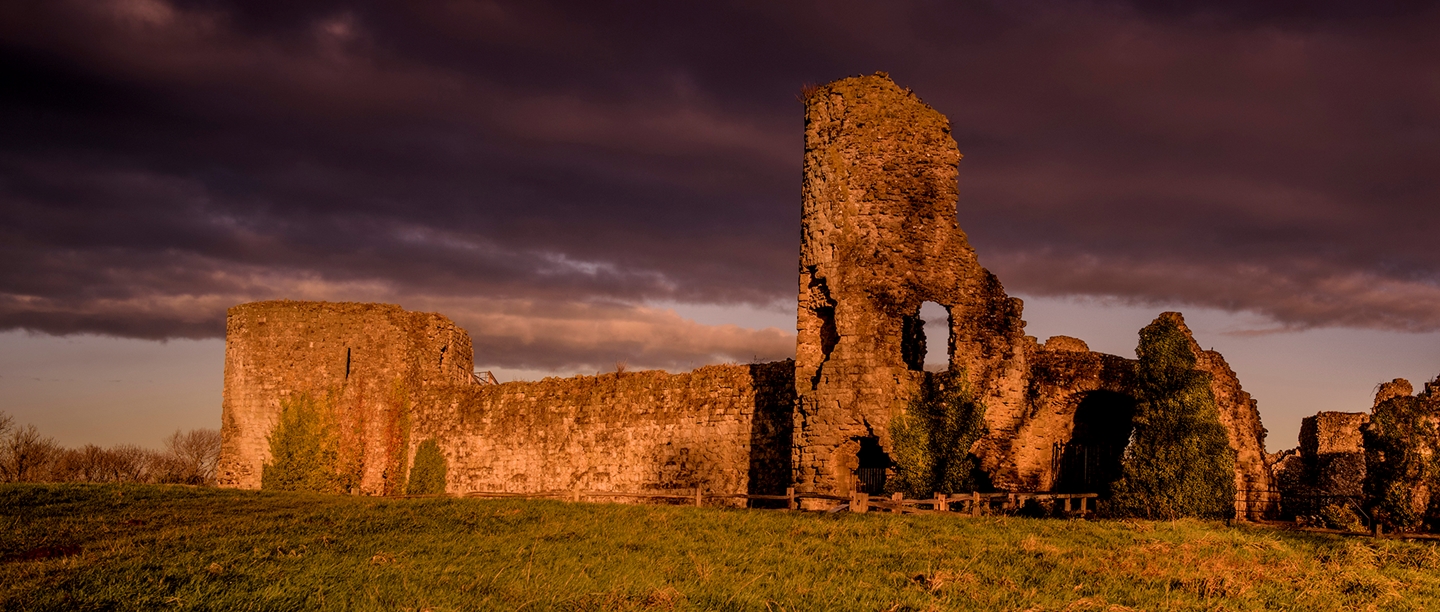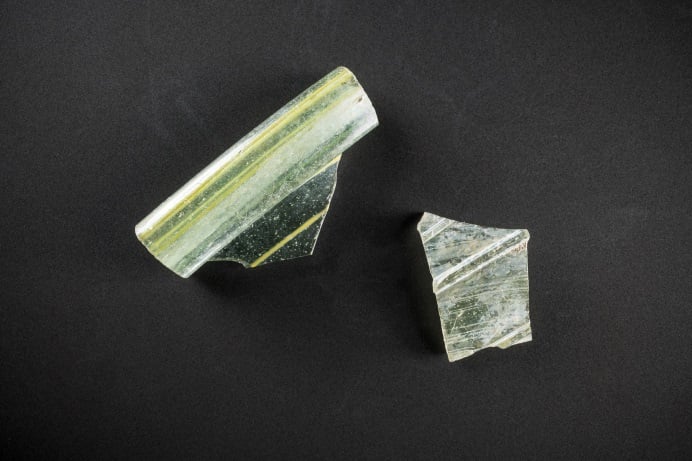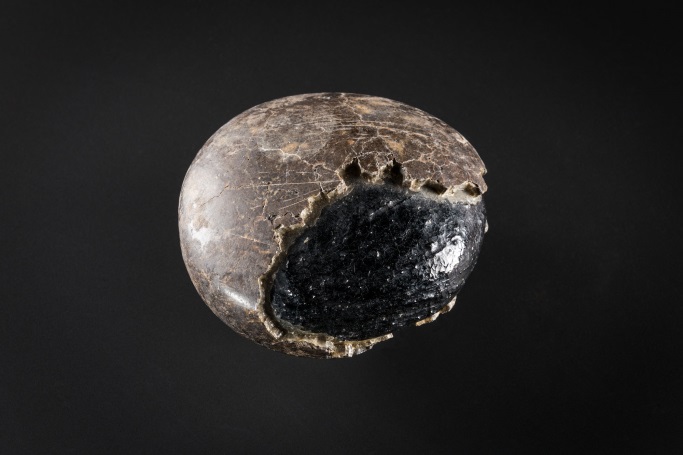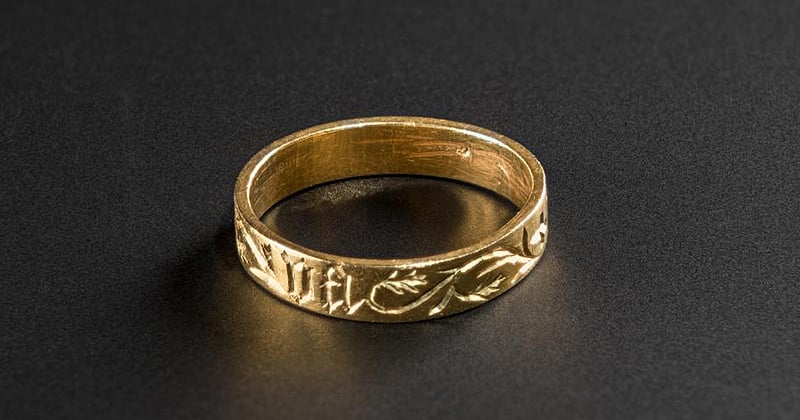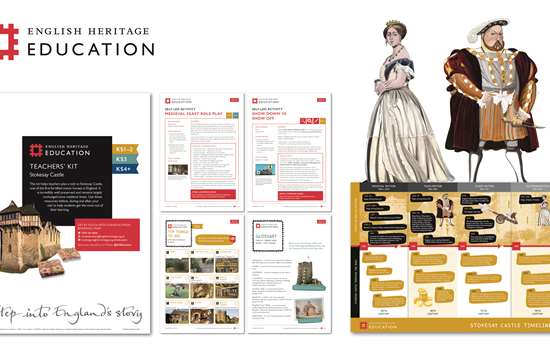Meet our Expert
My name is Kathryn Bedford and I'm the Curator of Collections and Interiors in the South East. That means that I look after all the objects from all of our sites in Kent, Surrey, Sussex and Hampshire; from Stone Age axes through to carpets and furniture, and even a machine to measure nuclear bombs.
I started working in museums after I finished a PhD in medieval history and gained experience with a wide variety of collections and historical periods before I came to English Heritage. I enjoy being able to work across multiple sites and collections. There's always so much to learn!
My favourite object from Pevensey Castle has to be the posy ring. It's so delicate and perfect, exactly the same today as when it was originally worn around 600 years ago. Unfortunately we can't display it at Pevensey at the moment, but the image below gives you a really good idea as to the ring's shape and design.
- Kathryn Beford, Curator of Collections and Interiors (South East)
Glass Vessel Fragments
Date: 7th to 8th century
Description: We have limited archaeological finds and few mentions in written sources about what Pevensey Castle was like in the early medieval period. These two fragments of glass give us a hint that it may have been quite an important place.
Even from such small fragments, glass experts can identify what the complete vessel would have looked like by comparing them to examples found elsewhere. The fragment on the right is from a cone-shaped beaker made of pale green glass with vertical trails of a similar colour. This beaker is one of the 'Kempston' type, originally from the Germanic areas of Europe. The other fragment is from a Valsgärde bowl in sea-green glass with thin yellow stripes and the rim folded outwards; it came from northern Italy. Both of these fragments are from high quality imported glass vessels that would only have been available to very wealthy people.
Such luxury items are rarely found in areas where there's little evidence for Saxon settlement, like at Pevensey Castle. That two fragments were found on the same site suggests that Pevensey may have been the seat of one of the rulers of the South Saxon kingdom.
Further Learning Idea: Research what a cone-shaped beaker and a Valsgärde bowl would have looked like and use your new knowledge to create reconstruction drawings for the vessels these fragments are from.
Cresset Lamp
Date: late 11th century
Description: Based on its shape and the variety of clay it's made from, we can infer that this lamp was imported from Normandy in the decades following the Norman Conquest. This suggests that the castle the Normans built at Pevensey was initially furnished with objects they brought with them, rather than objects made locally. It's interesting that this was the case even with relatively cheap items.
This lamp would have held oil or pitch (a sticky, tar-like substance), with a wick resting in the lip on the top edge. The black staining inside and around the top of the lamp is a combination of soot and grease from when it was in use.
The thick spike at the base of the lamp would have rested in a metal loop which was attached to a wall sconce, or chains hanging from the ceiling. These metal fittings would stay in place while the ceramic lamps were moved or replaced as necessary.
Further Learning Idea: What do you think it would have been like to travel around a castle with only small lamps like these to guide your way? Write down a collection of words to describe the journey and use them to develop a piece of creative writing to bring it to life.
Linen Smoother
Date: 13th to 15th century
Description: Glass linen smoothers (or 'slick stones') were used to press delicate and high quality fabrics, especially areas like collars and cuffs that were vulnerable or had decoration. They weren't heated like metal irons but used cold on damp cloth to smooth the surface of the fabric gently and encourage all the fibres to lie in the same direction, increasing its shine.
Similar linen smoothers appear from the Viking period well into the 19th century. We can tell from the relatively smooth surface on both sides that this one is medieval. From the 16th century onwards, linen smoothers had thick handles projecting from the back, but in earlier centuries they were held in the palm of the hand, so that both sides could be used.
A large section of the surface of this linen smoother is missing, revealing the raw glass underneath. The break probably happened while the smoother was underground. All objects are more likely to corrode if they are buried in damp soil, but glass is particularly vulnerable. Moisture causes the glass to laminate (split into layers), which can then become detached.
Further Learning Idea: Consider the characteristics of different kinds of materials (wood, fabric, metal, stone, bone) and whether they would be more or less likely to survive underground in damp, muddy conditions for archaeologists to find.
Posy Ring
Date: 15th century
Description: Posy rings bear inscriptions that are usually love notes or messages of fidelity. The name 'posy ring' comes from the word 'poetry' and they were often used as wedding rings. An inscription on the outside, as you can see on this example, is more common in 14th and 15th-century rings. Later on, in the 16th and 17th centuries, the inscriptions were placed inside of the ring. People still choose to place inscriptions inside special rings today.
We don't know the meaning of this inscription (+VIE-VA). It's likely to be an abbreviation rather than a couple's initials, but it doesn't match any standard phrases. A set of four very similar rings were found at Lewes, about 30 miles from Pevensey, suggesting that they were possibily all made locally.
It's been suggested that the inscribed decorations may have originally been filled with coloured enamel, but examination under a microscope showed no evidence to support this idea. This type of ring was not usually decorated beyond inscription so it's likely that what you see in this image is how the ring would have looked when it was worn.
Further Learning Idea: Develop your own short, poetical sentence that could have been inscribed on a posy ring in the 15th century.
